郑州商城保护地段城市设计,郑州,河南
2022-10-25周俭,ZHUYayun
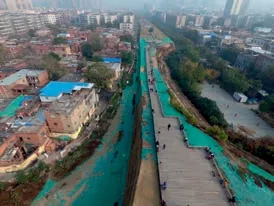
1 城墙遗址现状Ruins of the capital city of the Shang Dynasty
设计主持:常青
方案设计:常青,张鹏
合作设计:刘伟,吴雨航,赵英亓,崔梓祥,张雨慧,门畅,樊怡君,张子仪,刘瀛泽,辛静
结构形式:框架结构,砌体结构,木
结构
场地面积:282,029m²
建筑面积:702,157m²
建筑高度:100m以下,12m以下,9m以下
设计时间:2020-2021
Principal Architect: CHANG Qing
Schematic Design: CHANG Qing,ZHANG Peng
Cooperative Architects: LIU Wei,WU Yuhang, ZHAO Yingqi, CUI Zixiang,ZHANG Yuhui, MEN Chang, FAN Yijun,ZHANG Ziyi, LIU Yingze, XIN Jing
Structure: Frame structure, masonry
structure, wooden structure
Site Area: 282,029 m²
Floor Area: 702,157 m²
Building Height: Under 100 m/12 m/9 m
Design Period: 2020-2021
郑州商代王城是代表中国国家历史身份的八大古都之一,也是迄今我国已发现规模最大、保存最完好的商代都城城垣遗址,是华夏 3600年文明史和都城筑城史的见证,其遗产本体需要高水准保护和展示,其比邻街区需要适应性活化和再生。因此本设计的总体定位为“中华古都的现代复兴”,包括古韵新风的风格定位和商都特色的功能定位,以突显郑州历史身份载体的商遗址价值,建构街区与宗教文物相连的名胜地段,创造街区观游购三位一体的活力场所,促进中心城区的空间再生与文化复兴。
针对商都遗址和比邻街区,设计分别提出了“环、园、衔、观”与“留、改、拆、添”的八字方针。对于城垣地段,以遗址景观带贯通环状遗址轨迹,景观带内建地景式草坡,形成舒展开敞的遗址公园空间,可获得观景与观演的参与式场景体验, 在城垣豁口处,采取具象复建或意象塑造的城门衔接策略;对于衰败旧区,保护文化遗产及历史空间肌理,改良街区内既有建筑品质,拆除低质违章建筑,加建提升街区风貌和功能品级的新建筑。
经市规委会和全国专家评审会审议,一致通过了这一适应性再生设计成果,并对其在解决复杂功能需求和高度审美诉求方面的创意给予了充分肯定和赞誉。该城市设计成果对项目的工程设计和实施阶段起到了管控和推进作用。□
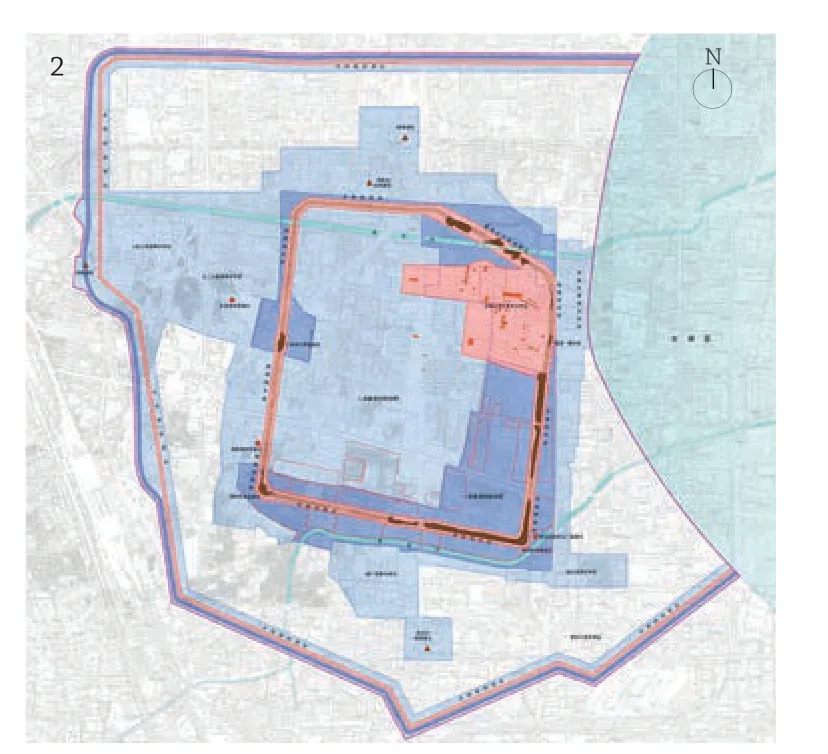
2 郑州商代都城遗址保护区划Conservation Zoning of the capital city of the Shang Dynasty in Zhengzhou
King City of the Shang Dynasty in Zhengzhou is one of the eight ancient capitals representing China's national historical identity.It is also the largest and best preserved ruins of the capital city of the Shang Dynasty that has been discovered in China so far. It is the witness of the 3600 year civilisation of China and the history of the capital city. Its heritage ontology needs high-level protection and display, and its adjacent blocks need adaptive activation and regeneration. Therefore, the overall positioning of this design is "the modern renaissance of the ancient capital of China", including the style positioning of the ancient charm and the new style and the functional positioning of the characteristics of the commercial capital, so as to highlight the value of the commercial site of Zhengzhou's historical identity carrier, construct the scenic spots connected with the religious relics in the block, create a dynamic place of the trinity of viewing, sightseeing and shopping in the block, and promote the spatial regeneration and cultural renaissance of the central city.For the Shangdu ruins and the adjacent blocks, the design puts forward the eight character principles of "ring, garden, title and view" and "keep, change,dismantle and add". For the city wall section, the site landscape belt is used to connect the circular site track, and the landscape belt is built with the landscape grass slope to form a stretch and open site park space and a participatory scene experience of viewing and performance. At the opening of the city wall, the city gate connection strategy of concrete reconstruction or image shaping is adopted; For the decaying old area,protect the cultural heritage and historical space texture, improve the existing building quality in the block, dismantle the low-quality illegal buildings, and build new buildings to improve the style and functional grade of the block.After deliberation by the Municipal Planning Commission and the National Top Expert Review Committee, the adaptive regeneration design achievement was unanimously approved, and its creativity in solving complex functional needs and high aesthetic demands was fully affirmed and praised. The urban design achievements have played a role in controlling and promoting the project into the engineering design and implementation stage.□ (Translated by ZHU Yayun)
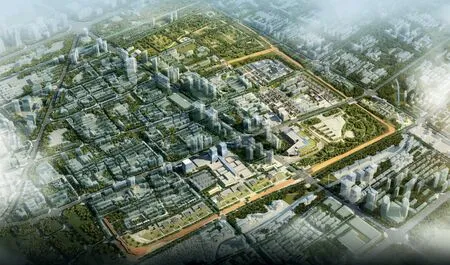
3 城市设计鸟瞰效果Aerial view rendering of urban design
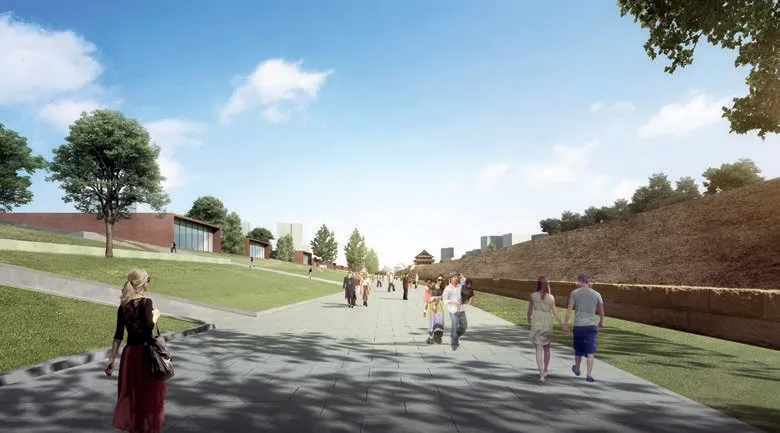
4 南城垣观景台效果Rendering of south city wall viewing platform

5 南城垣夕阳楼剧场Sunset Theatre, south city wall
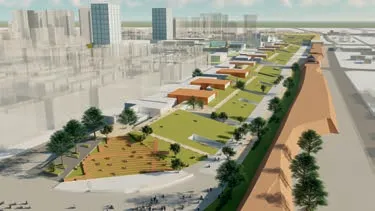
6 夕阳楼剧场及亳望台Sunset Theatre and Observatory
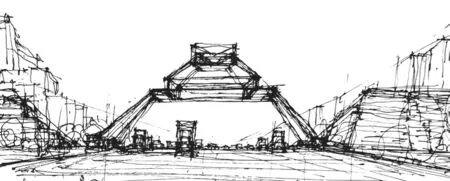
8 紫荆门设计意向方案一Zijing Gate Design, option 1
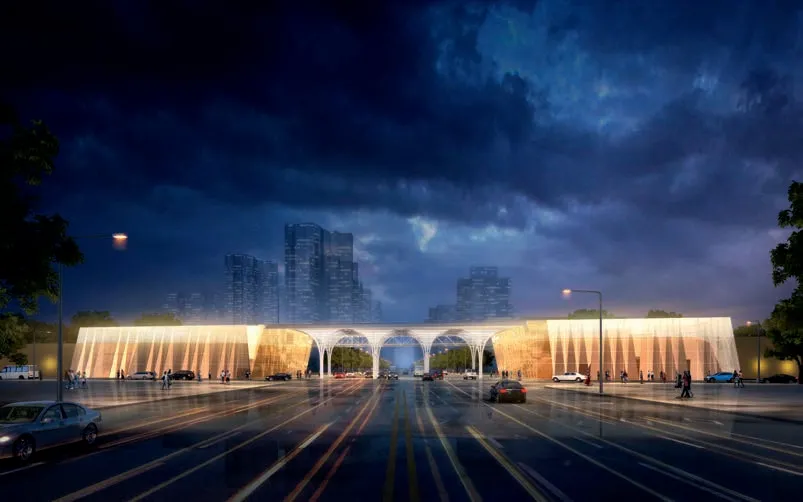
9 紫荆门设计意向方案二Zijing Gate Design, option 2
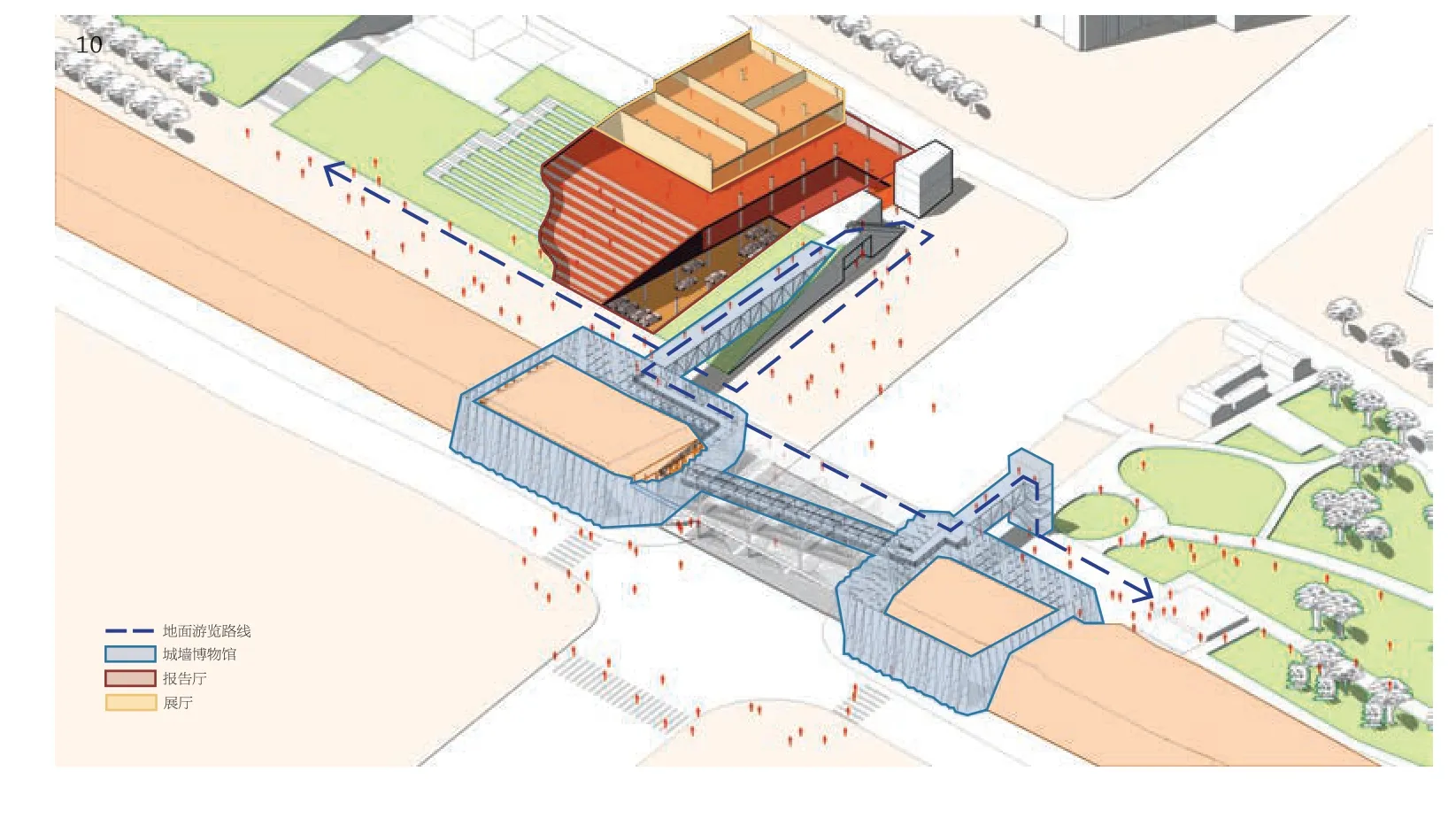
10 城墙博物馆及拱门The City Wall Museum and Arch
项目评论
“适度”——历史环境再生设计的理念与实践
项目以“中华古都的现代复兴”为目标,在一个极其复杂且日益衰退的历史环境中,运用城市设计方法,充分体现了在总体上表达“与古为新”风格定位以及从整体上把握“遗址再现,街区再生”设计目标的核心思想。
设计通过空间重塑为城墙遗址及其环境营造了适宜的空间尺度,突显了商都的历史身份和遗址价值,构筑了一个以商城城墙遗址为核心的景观环境体验场所。设计融合遗产本体保护、遗产环境活化、街区再生更新,将三者置于当代城市发展历史阶段的环境中思考,主张采用当代表达方式来阐述历史,以适应当代人的解读模式和文化观念。因此,设计对历史肌理的传承以及建筑尺度、建筑风格和景观风貌的塑造均体现了适度的理念,通过把握适度的秩序、适度的尺度、适度的形式和适度的仪式感来使当代人实现对古今关系的空间认同。设计由此产生了一种将遗址公园及其周边街区与城墙内外的城区有机衔接为一个以城墙遗址公园为核心的整体空间格局,避免了常见的新旧空间断裂。
周俭
全国工程勘察设计大师同济大学建筑与城市规划学院教授

11 阜民门复原与紫荆门创意设计Restoration of Fumin Gate and Design of Zijing Gate
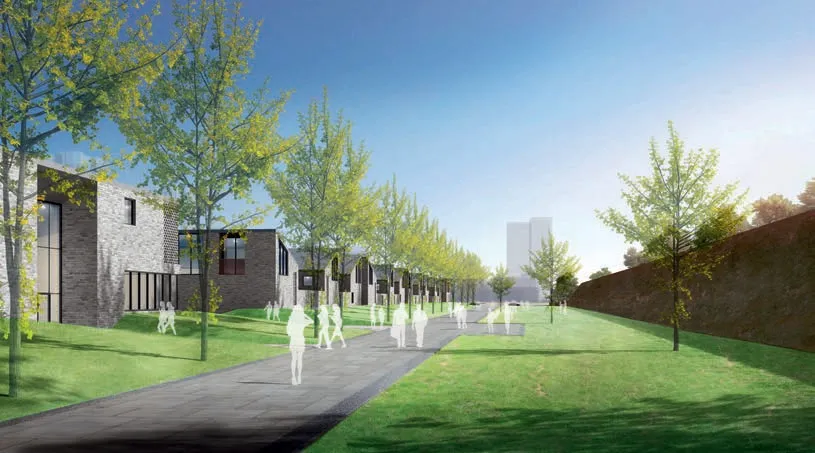
12 亳都古巷再生设计Regeneration design of Bodu Lane
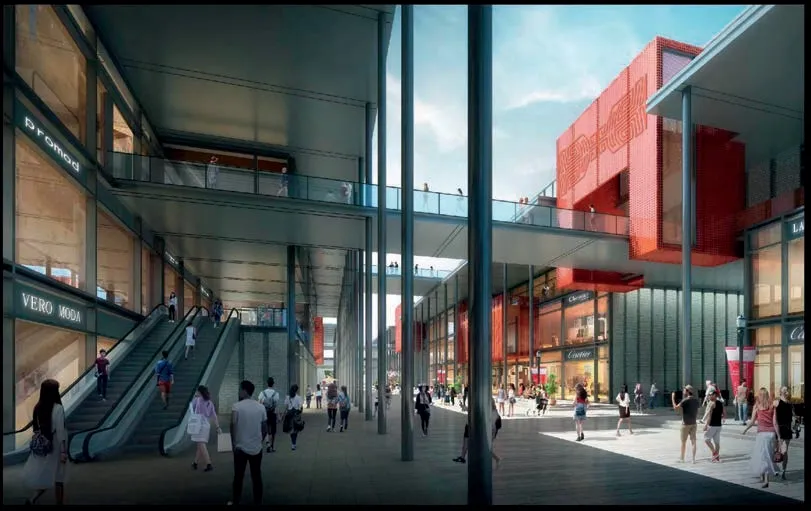
13 中轴商业街(原主事胡同)效果Rendering of central axis commercial street (original Zhushi Hutong)
Comments
"Moderation": The Concept and Practice of Historic Environment Regeneration Design
The project aims at the "modern revival of ancient Chinese capital". From a general view, the use of urban design in an extraordinarily complex and decaying historic environment has fully demonstrated the style positioning of "endowing the old with the new" and integrally grasped the core concept of the goal of "reappearance of sites and regeneration of blocks."
The design has created a suitable spatial scale for the city wall site and its environment by rebuilding the space, highlighting the historical identity and heritage value of Shang City, and building a place of landscape experience with the city wall site as the core. The design has integrated the ontological protection of heritage,the activation of the heritage environment, and the regeneration of blocks. It considers the three concepts in the context of the historical stage of contemporary urban development. It advocates using contemporary expressions to narrate history to adapt to the present generation's interpretation mode and cultural concepts.Therefore, the design's inheritance of historical texture and the shaping of architectural scale,architectural style and landscape style all reflect the concept of moderation. It enables the present generation to realise the spatial identification of the relationship between ancient and modern by setting the moderate order, moderate scale,moderate form and moderate sense of ritual.As a result, the design has produced a general spatial pattern that organically connects the relics park and its surrounding blocks with the urban areas around the city wall, with the city wall relics park as the core, avoiding the common spatial ruptures between the old and the new.
(Translated by LIU Chang)
ZHOU Jian
National Master of Engineering Design and Geotechnique Investigation Professor, College of Architecture and Urban Planning, Tongji University
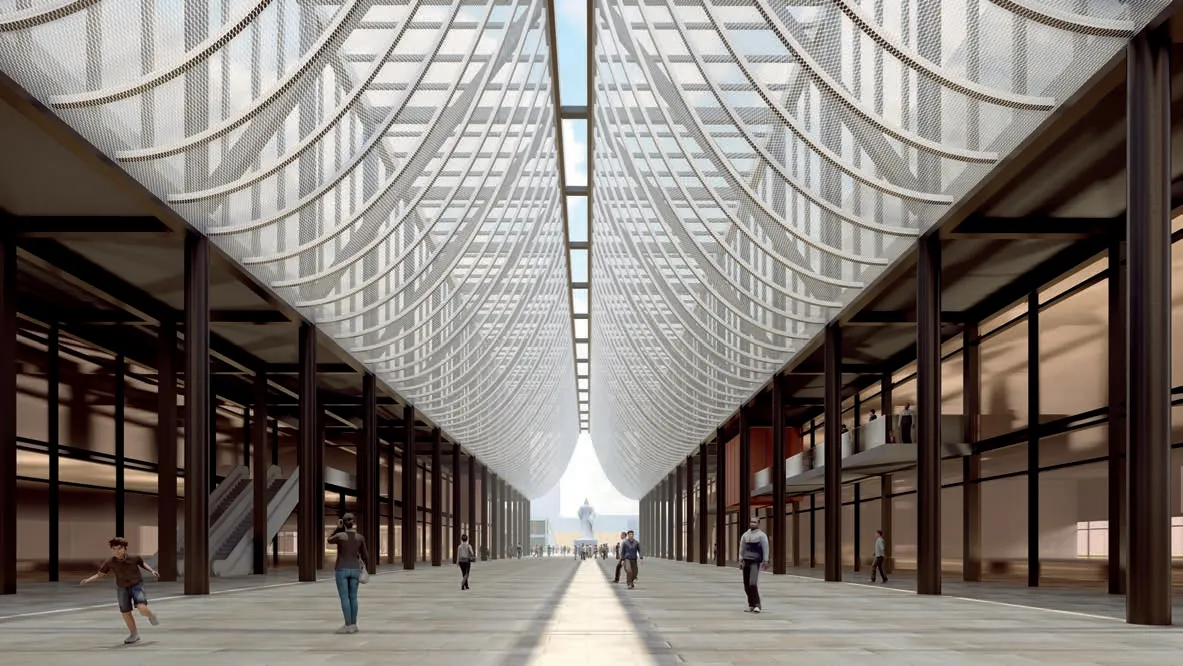
14 天中街帐幕长廊效果Rendering of Tianzhong Street corridor

15 天中街鸟瞰夜景Aerial view of Tianzhong Street at night
